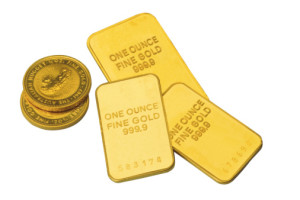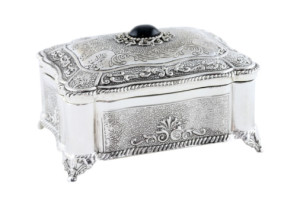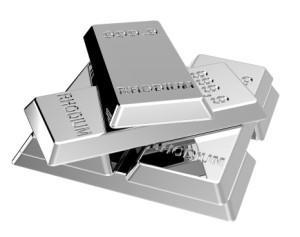Metals
Gold

Gold has been prized by every civilization that has come into contact with it. The
demand and search for gold was a major factor in human exploration, industrialization,
and conquest.
Pure gold is very soft and malleable. It can be made into solid sheets so thin that
light can pass through it; and one ounce of pure gold can be stretched to a length
of five miles. Obviously pure gold is not ideal for use in jewelry as it would
not retain its design, or be able to secure gemstones.
To allow gold to maintain its color and luster, and tolerance (hypo-allergenic properties),
as well as its versatility and durability (to allow it to be used in designs ranging
from simple settings to masterpieces of intricacy), gold is mixed with other metal
alloys.
Gold is unique among all metals for having the widest range for what can be considered
“gold”. Gold is measured in karats, which relates to the purity of gold from
24K (pure gold) to 10K, as follows:
- 24K gold is 99.9% pure gold
- 22K gold is 91.6% gold
- 18K gold is 75% gold
- 14K gold is 58.5% gold
- 10K gold is 41.7% gold
The luster and durability of 14K gold makes it the most popular gold used in jewelry.
If 24K is pure gold, then 14K is 14 parts gold, and 10 parts other alloys.
The combination of alloys used in 14k produces a varied range of color, and strength.
The most common colors are rose gold, white gold, and yellow gold In
order to produce the desired color and luster, as well as durability, common mixtures
of 14K gold include:
Yellow gold: 58.5% gold, 25% silver, and 17% copper.
White gold: 58.5% gold, 20% copper, 14.5% nickel, and 7.9% zinc. It
is the nickel and zinc content that gives white gold its color.
Rose gold will always start with 58.5% gold, but the copper content will
be increased to produce the desired color.
Silver

Silver is the Queen of Metals, and like gold, has been sought after and prized since
ancient times. One of its earliest known uses is the production of currency—a
practice that continues today. Silver is more abundant than gold, and unlike
gold, silver does not need to be “red hot” in order to fashion into shapes or instruments.
Thus, silversmiths have the luxury of fashioning, or sculpting silver at room temperature,
producing the earliest form of mirrors, (silver lining the back of glass or quartz)
as well as elaborate tableware, and other opulent pieces. Possessing these
types of silver items distinguished individuals of high social and political rank.
In jewelry, silver is prized for its luster, durability and versatility; and its
popularity has continued to increase as an economical alternative to platinum and
white gold. Like gold, pure silver is too soft to maintain its design, and
must be mixed with other metals. Silver has the distinction of being associated
with the earliest form of consumer protection. As early as the 4th Century
AD, Roman authorities had developed a system for inspecting and stamping silver
per its quality. In 1300, King Edward I of England, through royal decree,
established the standard for Sterling Silver that exists today, 92.5% pure silver
with a 7.5% copper alloy.
Rhodium

Rhodium is a silver/white metal that is part of the platinum family. Rhodium
has the distinction of being the most expensive precious metal on the market. Unlike
gold and silver, in its pure state, rhodium is one of the hardest substances on
Earth. Sterling Silver and white gold jewelry is often plated with a rhodium
finish to maintain its luster and reduce tarnish.